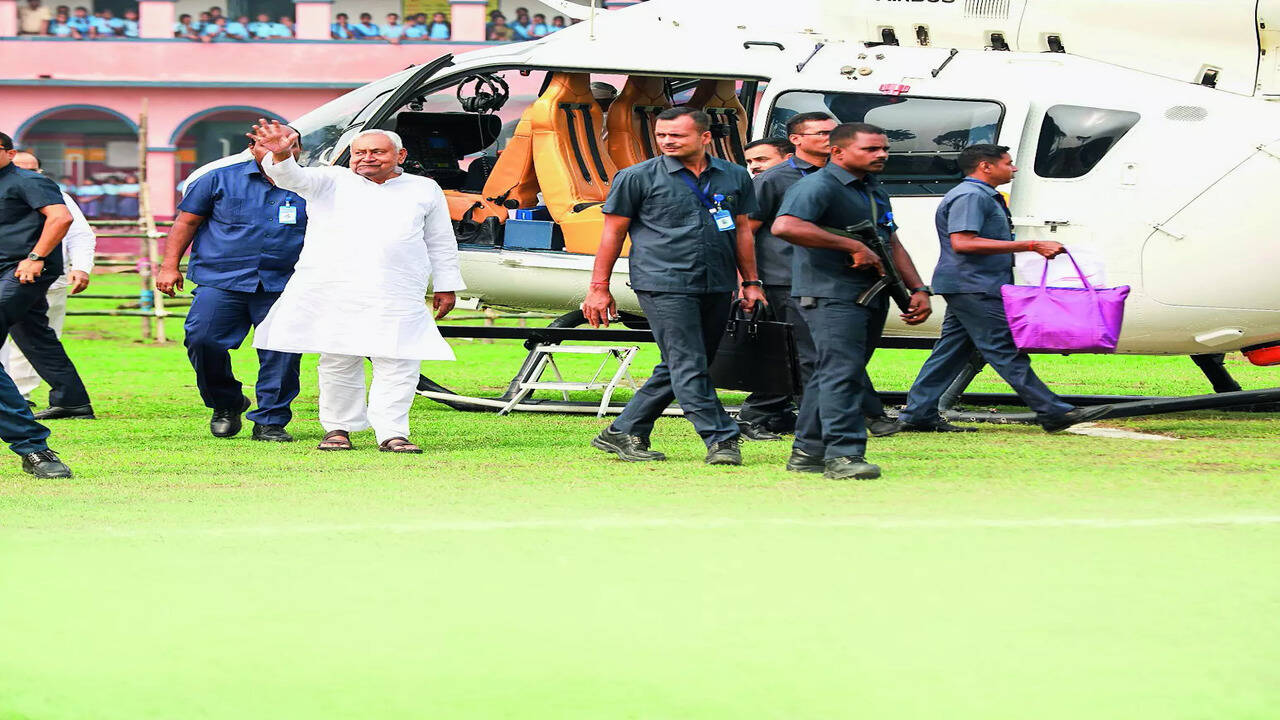Copyright indiatimes

The first phase of voting in Bihar saw what the Election Commission describe as an historic turnout. On November 6, more than 65 per cent of the 3.75 crore eligible voters exercised their franchise across 121 assembly constituencies.This contest is seen as a crucial test for the popularity of the ruling National Democratic Alliance, led by Chief Minister Nitish Kumar.As the election unfolds, the outcome will not only decide the next government but also mark the end of one of India’s least active state legislatures. The 17th Bihar Legislative Assembly, elected in November 2020 and dissolved in July 2025, holds the record for the shortest full-term assembly in the state’s history.Yet, data reveals an even more concerning picture of the state of democracy at the broader level.Fewest sessionsThe outgoing assembly recorded the poorest legislative performance in the state’s recent history, holding only 146 sittings between 2020 and 2025 – the lowest during Nitish’s four terms as CM. This figure is also the lowest among all assemblies in the country.The last time Bihar’s legislature met less frequently was over 40 years ago, when the 7th Assembly (1977-1980) convened for just 144 sittings under chief minister Karpoori Thakur of the Janata Party, according to PRS Legislative Research. However, that assembly did not complete a full five-year term.On average, the outgoing assembly met for just 29 days a year. Even during those sessions, proceedings were brief – lasting about three hours a day, compared to roughly five hours in most states in 2024. The longest sessions, held in early 2021 and 2022, lasted only 22 sittings each.Bihar’s budget sessions, however, were among the most productive in the outgoing House, functioning for more than 80 hours on three occasions. In the last two budget sessions, the House functioned for 45.9 and 67.8 hours, respectively. The 17th Assembly’s least productive session was the monsoon session that concluded in July this year – the House functioned for just 4.6 hours.The 17th Assembly lost 225.9 hours to adjournments, at an average of 45.2 hours per year. The budget sessions, in fact, saw the most time lost to adjournments – a total of 147.2 hours, accounting for 65.2 per cent of all adjournment time losses.Bills without debateAcross the term, the assembly introduced 99 bills. Each of them was passed the same day it was tabled, without any referral to committees or extended debate. Most of these laws passed were related to education, finance and taxation, and administration, according to data compiled by Bihar Election Watch and Association for Democratic Reforms.Some of these bills included: (i) the Bihar Public Examinations (Prevention of Unfair Means) Bill, 2024, (ii) the Bihar Control of Crimes Bill, 2024, and (iii) the Platform Based Gig Workers (Registration, Safety and Welfare) Bill, 2025. In 2023, the assembly approved two bills to expand reservations in government jobs and educational institutions. While the government may tout this swift passage as a sign of efficiency, the lack of legislative scrutiny raises concerns about oversight, policy quality and constitutional integrity.The Bihar Reservation (Jobs and Educational Institutions) Bills of 2023 – passed in similar haste – were later struck down by the Patna High Court in June 2024, highlighting the risks of bypassing detailed examination. Besides, seven ordinances were issued, lower than previous assemblies. The number of ordinances issued in Bihar has gone down over the years. For example: Seven ordinances were promulgated between 2021 and 2025 compared to 16 by the previous assembly, between 2015 and 2020.Other than the general discussion on the annual budget, legislatures also discuss expenditures of major ministries. In the past five years, the assembly discussed such expenditures for an average of nine days.Uneven representationGender underrepresentation persisted in the 17th Bihar Assembly, with women legislators holding steady at around 11 per cent – virtually unchanged from previous terms. With only 26 women MLAs, issues such as law and order, women and child safety, and public health received little attention.Most legislators were between 41 and 55 years old, though the 2020 elections saw a rise in representatives aged 56 to 77 compared to 2015. The share of young legislators (25-40 years) fell to 14 per cent, down from 16 per cent in the previous assembly.Meanwhile, dynastic politics remains deeply rooted. About 27 per cent of Bihar’s elected representatives – across the assembly, legislative council and Parliament – come from political families. Together, these trends reflect a legislature that mirrors entrenched power structures more than the state’s diverse social and demographic realities.Questions askedDuring the five-year term, MLAs raised a total of 22,505 questions, averaging 179 per member. Among the top five questioners, two belonged to the Rashtriya Janata Dal (RJD), and one each to the Bharatiya Janata Party (BJP), Congress and Communist Party of India (Marxist).The leading performers – Arun Shankar Prasad (BJP, Khajauli) and Manohar Prasad Singh (Congress, Manihari) – asked 275 and 231 questions, respectively. However, many legislators posed fewer than 10 questions throughout the term, revealing stark disparities in participation.Most questions focused on rural development, education and health, indicating that while local issues received attention, scrutiny of wider governance remained limited.Taken together, these trends depict a worrying institutional drift. The 17th Bihar Assembly has functioned more as a procedural arm of the executive than as a deliberative body of elected representatives. The erosion of sitting days, the bypassing of committees, and the narrowing of legislative scope all signal a deeper crisis in how state-level democracy operates.“These numbers do point to a worrying trend of lesser days of legislative work, but they are not a reflection of the quality of debate in the assembly. Although, there is a need to increase the number of sittings, the focus must be kept on issues like unemployment, education and health,” says Gautam Mukherjee, a political analyst.As Bihar prepares for its next assembly, the challenge ahead is not merely electoral but institutional – reviving the substance of lawmaking. The coming five years will determine whether legislators can restore the assembly’s constitutional role as a forum for scrutiny, representation and debate, or allow it to remain an echo chamber of executive authority.



